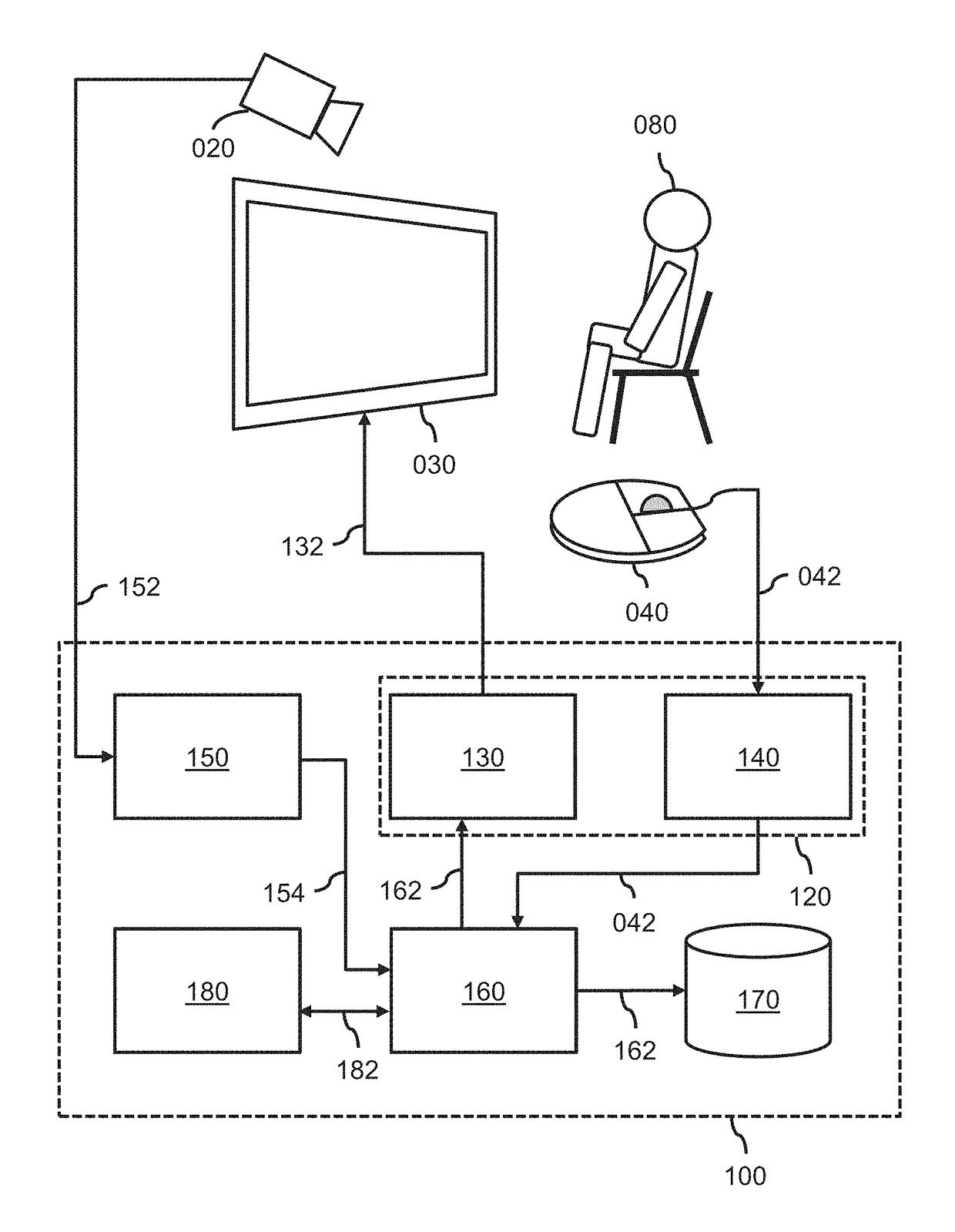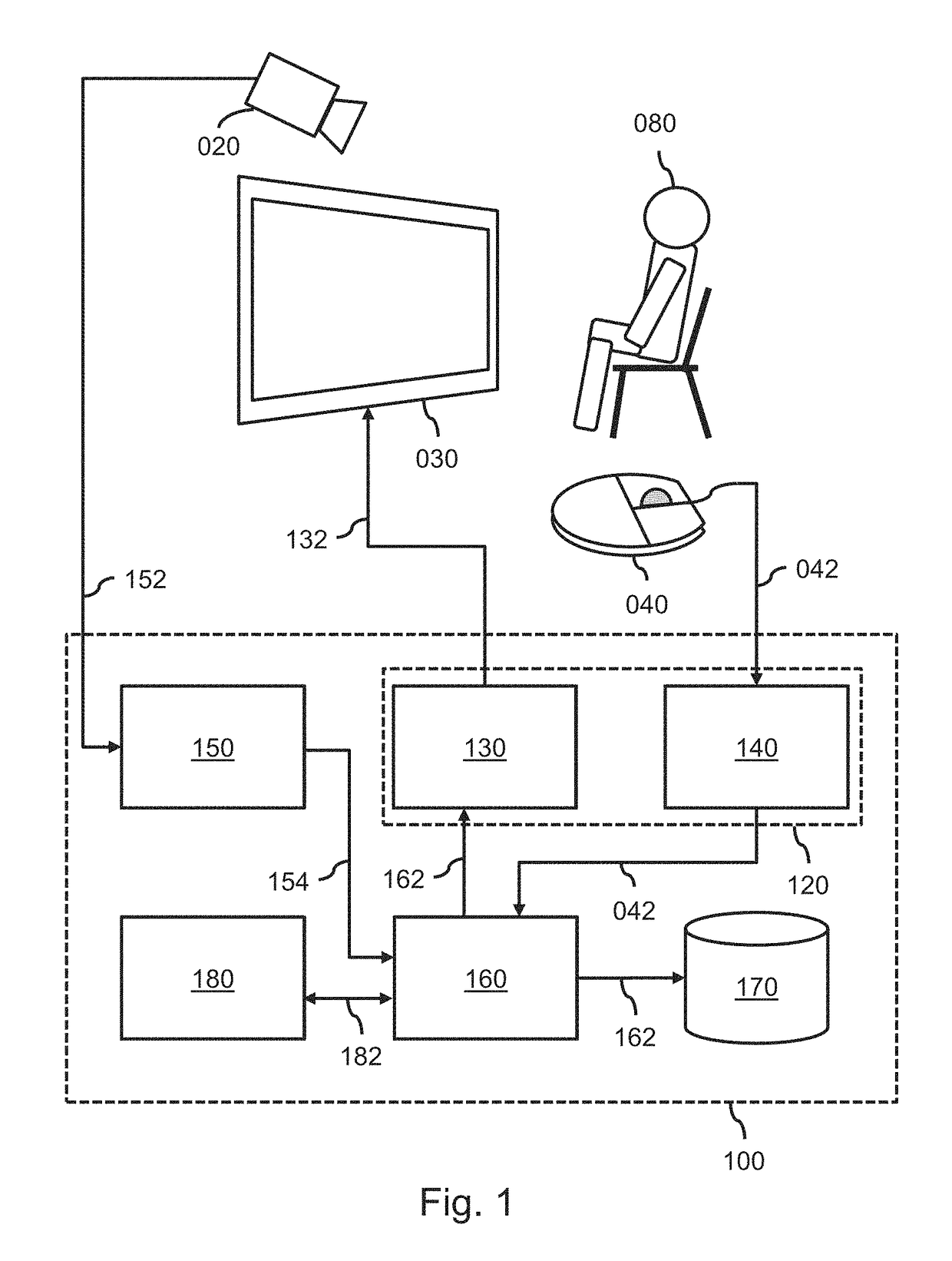Assessment of an attentional deficit
a technology of attention deficit and assessment, applied in the field of assessment of attention deficit, can solve problems such as void test results, and achieve the effect of avoiding or reducing, and preventing the automatic assessment of attention defici
- Summary
- Abstract
- Description
- Claims
- Application Information
AI Technical Summary
Benefits of technology
Problems solved by technology
Method used
Image
Examples
Embodiment Construction
[0090]FIG. 1 shows a schematic overview of a system 100 for use in the assessment of an attentional deficit. The system 100 comprises a user interaction subsystem 120 which is shown to be connected to a display 030, thereby enabling the user interaction subsystem 120 to present a test image to a subject 080 as part of the assessment. In the example of FIG. 1, the user interaction subsystem 120 is shown to comprise a display processor 130 which provides display data 132 to the display 030, with the display data 132 representing an output image which comprises, or is constituted by, the test image. Moreover, the user interaction subsystem 120 is shown to comprise a user input interface 140 for receiving user input data 042 from a user input device 040 operated by the subject, such as a mouse, keyboard, touch screen, etc. Accordingly, the user interaction subsystem 120 may record test data representing user input obtained from the subject 080 during the assessment. It will be appreciat...
PUM
 Login to View More
Login to View More Abstract
Description
Claims
Application Information
 Login to View More
Login to View More - R&D
- Intellectual Property
- Life Sciences
- Materials
- Tech Scout
- Unparalleled Data Quality
- Higher Quality Content
- 60% Fewer Hallucinations
Browse by: Latest US Patents, China's latest patents, Technical Efficacy Thesaurus, Application Domain, Technology Topic, Popular Technical Reports.
© 2025 PatSnap. All rights reserved.Legal|Privacy policy|Modern Slavery Act Transparency Statement|Sitemap|About US| Contact US: help@patsnap.com



